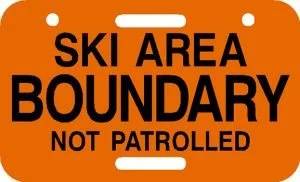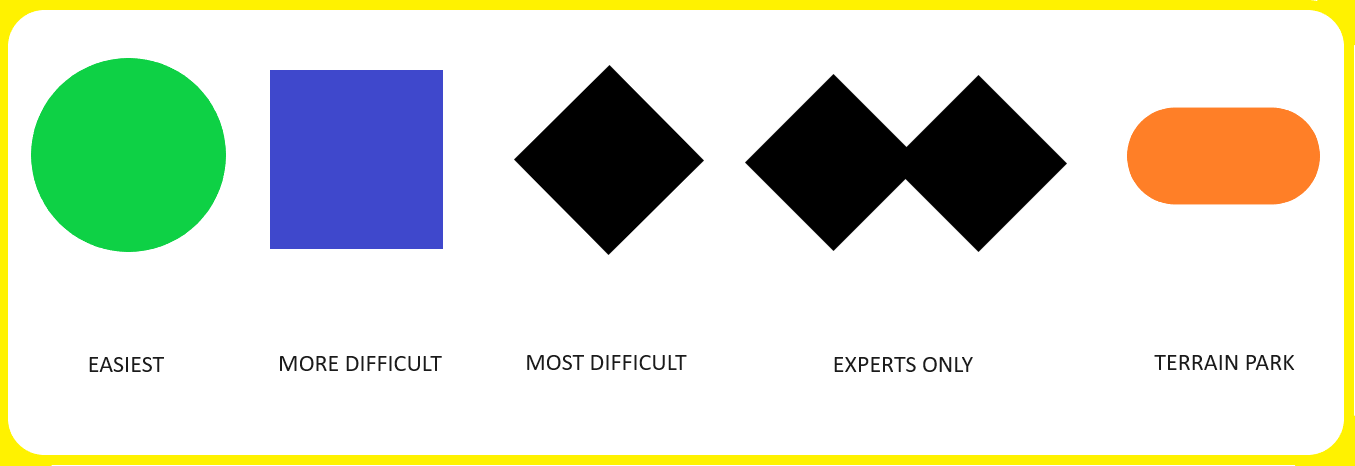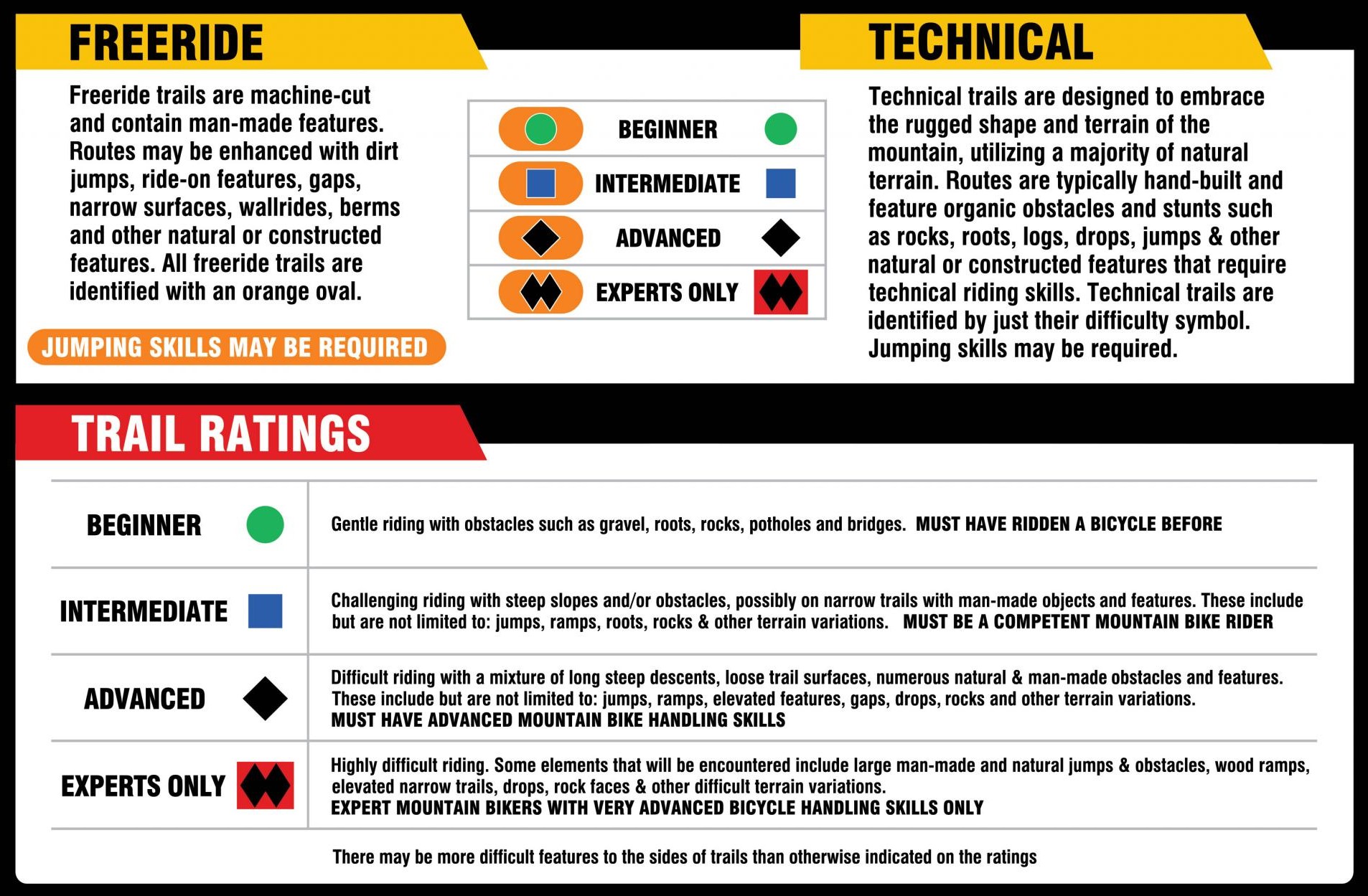Signage
When visiting a ski area, the premise is not limited to the ski runs – many ski areas will have day lodges, parking lots, restaurants, tube/tobogganing areas, terrain parks, walkways, access roads and other ski area facilities. You will come across signage throughout the ski area premise that are important to respect and understand. Please pay close attention to all signage. It is present for the safety of both guests and employees. Failing to follow the directions on these signs may result in the loss of your ticket or pass. It is your responsibility to be aware of mountain signage at all times.Marking, Flagging, Fencing
There are a number of different signs and markers to indicate conditions, boundaries and warnings on the Ski Area Premise.
All poles, flags, fencing, signage and padding on equipment or objects or other forms of marking devices are used by the ski area to inform you of the presence or location of a potential obstacle or hazard. For mountain biking, pin flags may be used to mark lips of jumps.
These markers are no guarantee of your safety and will not protect you from injury. It is part of your responsibility under the Alpine Responsibility Code to avoid all obstacles or hazards, including those that are so marked. Inbound terrain includes natural hazards including cliffs and cornices. Ski with caution, unmarked objects and hazards may exist.
Closed means closed
Closed runs
Entering closed runs and areas is strictly prohibited. Runs are closed for several reasons: trees have fallen onto the run, ditches or holes have rendered the run unsafe, a race or other events are taking place, Terrain Parks are not yet ready to open, or perhaps machinery is operating. Observe and obey all posted signs and warnings. Ignoring these messages may put you at greater risk. Those who violate closures may lose lift privileges.
Closed Resort
When the ski area is closed, access to the area is strictly forbidden for your safety.
While closed the ski area is not patrolled and area is not maintained for public use. Hazards may not be marked, areas will not be controlled for avalanches, and machinery may be working.
Ski Area boundary
Most ski areas mark their operational boundaries with fencing or signage.

The terrain within the ski area boundary is patrolled and some hazards are marked. The area beyond the ski area boundary is neither controlled nor patrolled. Some ski areas permit users to travel beyond the ski area boundary into the backcountry. Backcountry travel can be very hazardous and requires specialized equipment, training and experience. Do not travel into the backcountry if you are not qualified to do so. Some ski areas may close their ski area boundaries or portions of the boundary. A closure sign must be respected and obeyed. Breach of a closure could result in the loss of ski area privileges and other sanctions.
Walking in ski areas
relative trail difficulty
ski & snowboard trail levels
The designation of run difficulty is set by each ski area individually.
Skiers and riders should be advised that a Green Circle, Blue Square or Black Diamond trails are not necessarily the same as a similarly rated trail at another area. Skiers and riders should work their way up, beginning with the easiest trails, no matter what their ability level may be, until they are familiar with the trails at each ski area.
See more about Terrain Park Signage >> HERE.
BIKE PARK Trail SIGNAGE
Just like ski runs, routes within the Bike Park are designated by colour-coded trail markers. However, in Bike Parks there are two types of runs - Freeride & Technical. Each type has a colour-coded rating. It is important to note, trail difficulty designations can vary from one resort to another.
Freeride trails are machine-cut and contain man-made features such as dirt jumps, rid-on features, gaps, berms and other natural or constructed features. Freeride trails are identified with an orange oval.
Technical trails are designed to embrace the rugged shape and terrain of the mountain. Routes are typically hand-built and feature organic obstacles and stunts such as rocks, roots, logs, drops, jumps and other natural or constructed features. Technical trails are identified by just their difficulty symbol.


